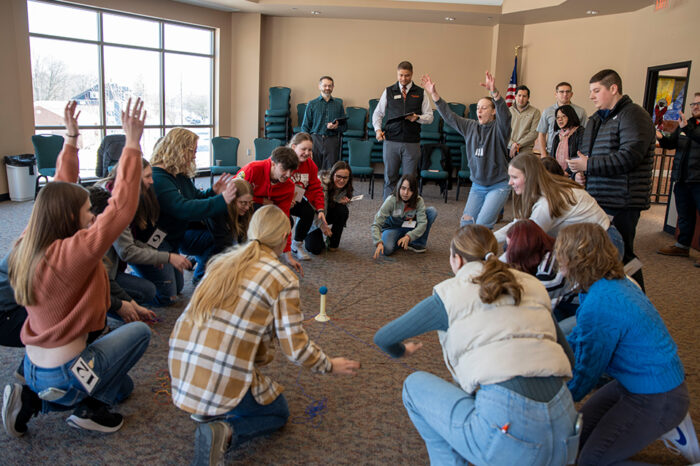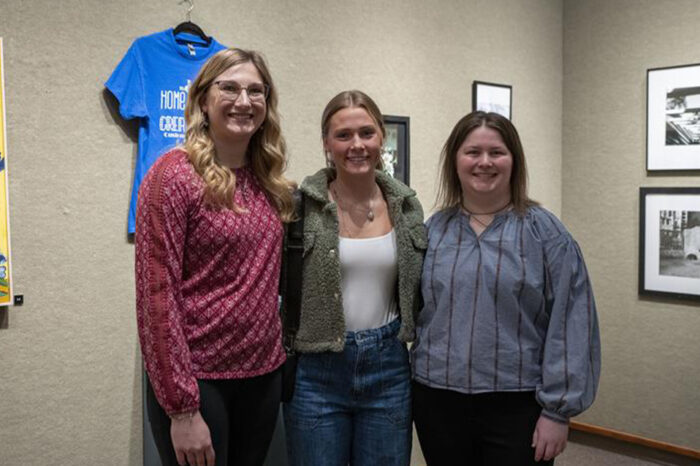Miss Toledo re-enters pageant world at a time of change


Megan Opolski poses for a portrait in downtown Toledo on Monday, August 20, 2018. Photo by The Blade photographer Samantha Madar.
(Written by Nicki Gorny, staff writer for The Blade. Story originally published Aug. 25, 2018).
Megan Opolski’s first hat is that of full-time home health nurse. Her second is that of a full-time student at the University of Findlay, where she’s working toward a master’s degree in business with a focus in health-care administration.
And, if things go well in a few months, she’ll soon be wearing one more hat: a crown. She’s in the running for Miss Ohio USA.
The 23-year-old Toledoan is on track to compete as Miss Toledo at the annual pageant, which this year is being held in Sharonville, Ohio, on Nov. 3-4.
While some contestants make their way to Miss Ohio USA via a local pageant, others, like Miss Opolski, enter at-large and begin at the state rather than the local level. If she takes the crown this fall, she’ll advance to compete for miss USA next spring.
To reign as Miss USA would be a dream for Miss Opolski, who’s returning to the pageant scene after taking a few years off to focus on her education and career. For now, as she continues to work to bring herself to top physical shape, prepare for the questions the judges will throw her way during an interview session, and to find the perfect outfits to wear on stage, she’s got her sights set more locally.
“I think the idea of being able to represent such a big city in a state pageant is really neat,” she said. “I’m just excited for the experiences of this pageant. Every time is a blast, so I’m really looking forward to it.”
Miss Opolski returns to pageantry at a tumultuous time for the industry, which in recent months has visibly struggled to bring a nearly 100-year-old model in line with the #MeToo momentum that’s challenging gender and power dynamics. Miss America notably made headlines earlier this summer by announcing that it would drop the swimsuit portion of its pageant.
“We are no longer a pageant. We are a competition,” Miss America head Gretchen Carlson recently told Good Morning America. “We will no longer judge our candidates on their outward physical appearance.”
Shake-ups like this raise questions about whether pageants – with the explicit or implicit value they place on female physical attractiveness – remain relevant in a society that thinks about women much differently than it did in 1921, when Miss American launched in Atlantic City, or in 1952, when Miss USA spun off in Long Beach, Calif.
Miss Opolski sees plenty of value in the model that’s proved to be fun, social, and confidence-building.
Steven C. Oliveri, executive director for the Miss America-affiliated Miss Ohio Scholarship Program, which held its state-level pageant in June, speaks similarly.
“The pageant has always been relevant to the people who enter,” Mr. Oliveri said. “The people on the outside may not recognize it, but the people who enter find it [to be] more than just winning a crown or winning a sash.”
Major players
Miss America and Miss USA represent the biggest players in a pageant world that offers a much wider variety of organizations under which an individual can compete. Miss America is the older of the tow, a boardwalk attraction that proved hugely popular in subsequent years; Miss USA came about some 30 years later after a crown-holder upset a major sponsor by refusing to pose in a swimsuit. Catalina Swimwear withdrew its support of the original competition and spearheaded the launch of the parallel pageant, which today feeds into Miss Universe.
Both organizations evolved from their swimwear roots over the decades, with judges today considering contestants more holistically. Miss Opolski, who herself has experience as a pageant judge, pointed to ways in which a young woman’s poise, confidence, and message in an interview inform the overall impression she makes on stage.
That evolution makes Miss America’s decision to drop swimsuits as the latest in a series of gradual updates over the years; judges are paying less heed to contestants’ physique and more to their intelligence, talents, and other nonphysical traits they display during competitions, Mr. Oliveri said. Miss America, he continued has long been adjusting its model to deemphasize its roots as a “beauty” pageant.
Miss USA distinguishes itself from Miss America in that it does not require an on stage talent and continues to incorporate swimsuits.
While these changes suggest that pageants have come to embrace a perception of beauty that goes deeper than skin, Sandra Faulkner, who heads the women’s, gender, and sexuality studies program at Bowling Green State University, said It’s also hard to deny that physical attractiveness continues to be an integral part of the pageant model.
“You could be smart, or you could be a real community leader, but if you’re not conventionally attractive, then you’re not going to be a beauty pageant winner,” she said. “So I kind of feel like some of it is just surface changes. I don’t know that there’s been real change.
“You could say, if you’re a leader in your community, if you have this kind of intelligence, if you do X, Y, and Z, then that’s just as important,” she continued. “But if it was just as important, then why is the appearance aspect still so prominent? You’re still being evaluated on physical attractiveness.”
More than looks
Megan Opolski doesn’t deny that beauty is part and parcel of pageantry. That she’ll be in stage in a bikini at Miss Ohio USA is in line with her preference; she said Miss America’s decision to drop the swimsuit competition strays too far from “what has always been a huge aspect of the pageant industry.”
But she’s quick to note that a contestant must bring a lot more to the table than her looks. When she entered her first pageant as an adult in 2014 – she doesn’t remember much about the toddler pageants that were her real introduction to the industry – she thought, on some level, that she just had to “lose a bunch of weight and look good.”
“I knew there was the interview aspect of it,” she said, but she didn’t anticipate how important it would be; Miss USA gives it one-third of weight in the final decision. “I feel like the judges really look at that.”
That first adult pageant saw her on stage for Miss Michigan USA; she was there as Miss Newport, representing the city where she was living with her parents while an undergraduate student at the University of Toledo. The experience didn’t end in a crown, but it did leave her hooked, she said.
She decided to try her hand with a smaller-scale pageant organization the next year, and that turned into a one-year reign as Miss Michigan Amazing in 2015.
“That was really a fun year,” she said. “It was filled with a lot of experiences. I got to do parades, meet and greets. …We went to the Detroit Auto Show. I got to wear my crown and my sash and, all day, it felt like I was a celebrity. People were coming up to me and asking me for pictures, asking to interview. That was one of the craziest experiences.”
Count Miss Opolski among those contestants for whom pageants are about more than winning a crown or a sash, and for whom the original model remains relevant. She credits her pageant experience with introducing her to an impressive cast of goal-driven contestants, who in turn became friends. She said the experience has been confidence-building, and, most importantly, fun. She enjoys competing.
Now she’s ready to throw her hat back in the ring.
Contact Nicki Gorny at ngorney@theblade.com or 419-724-6133.














